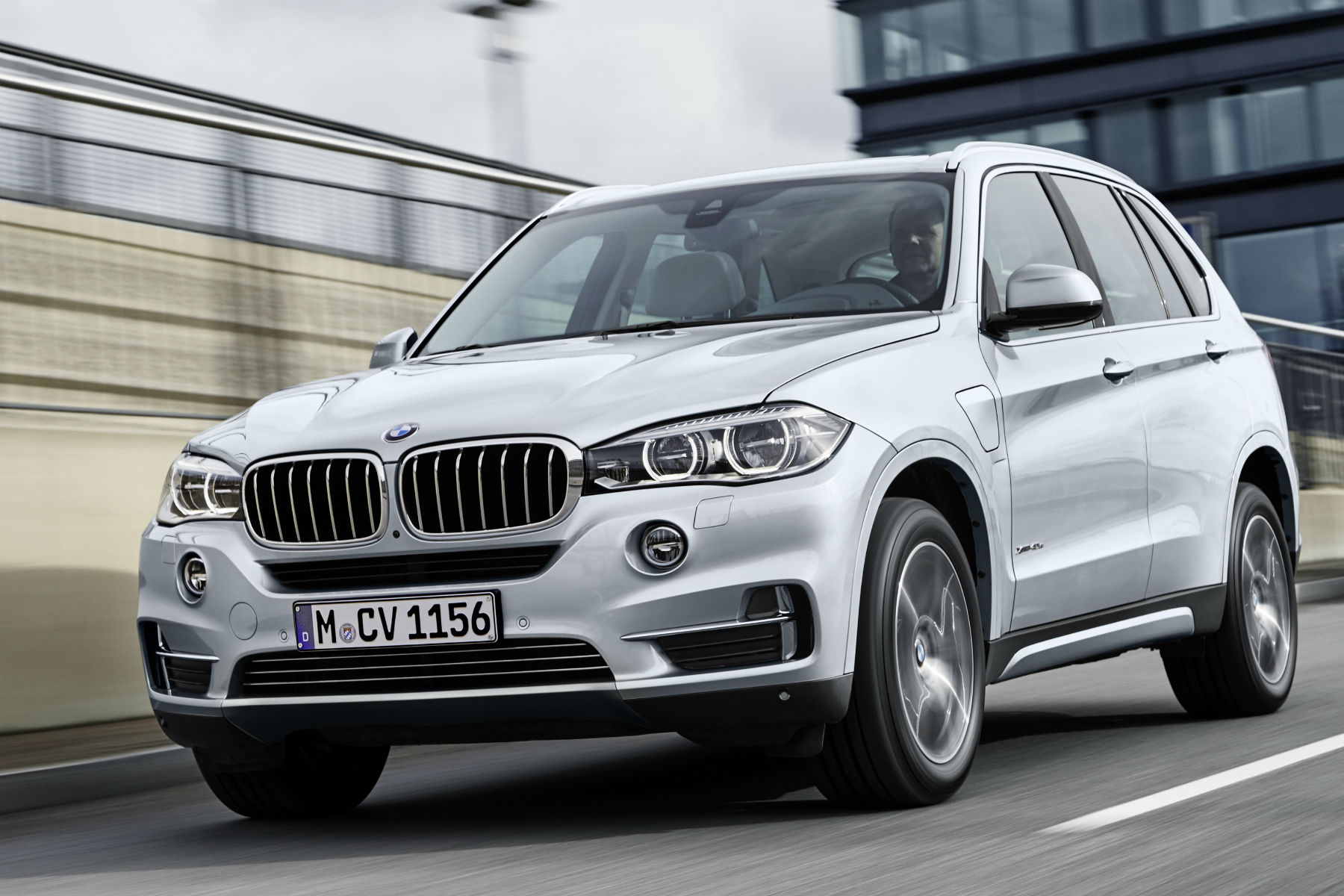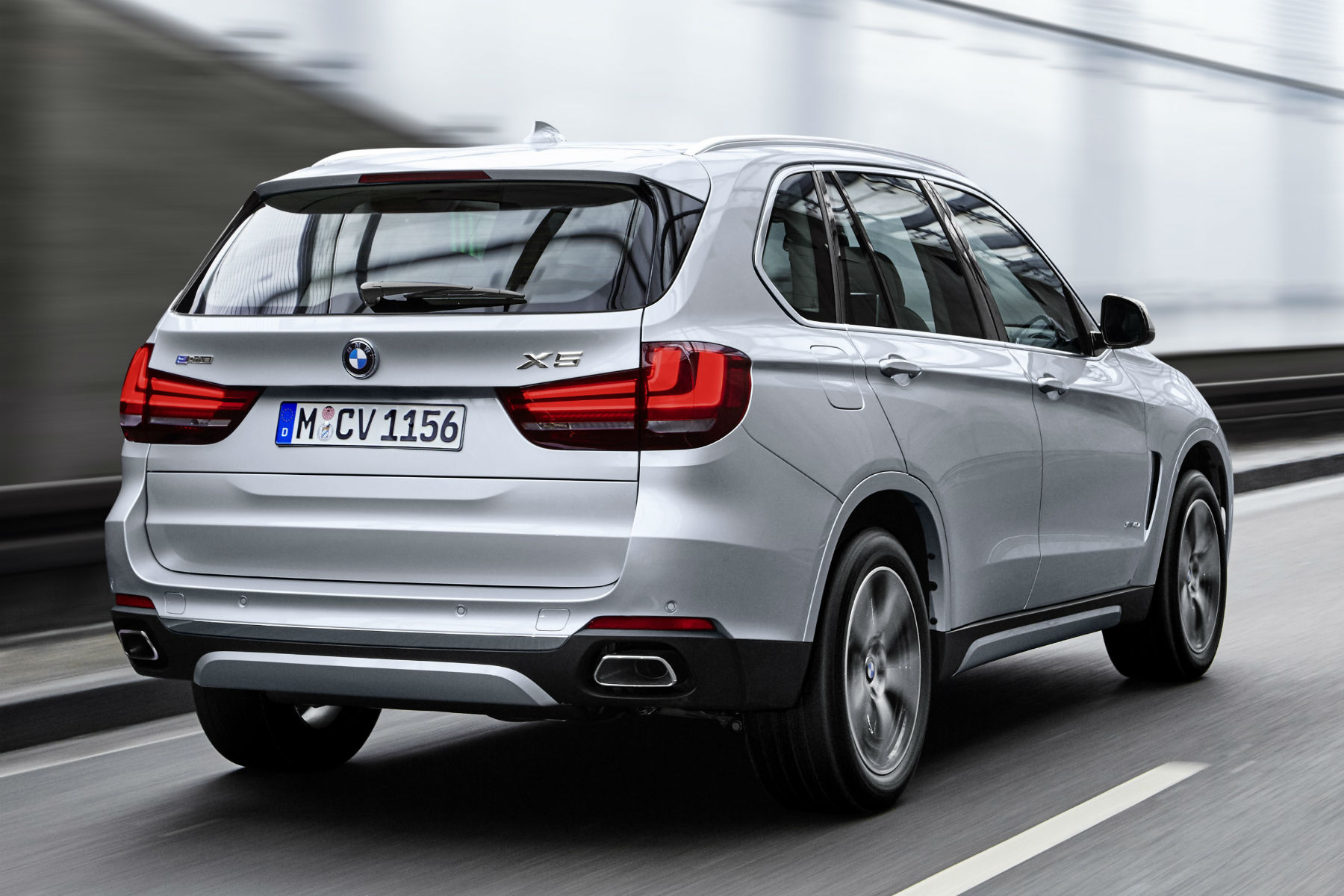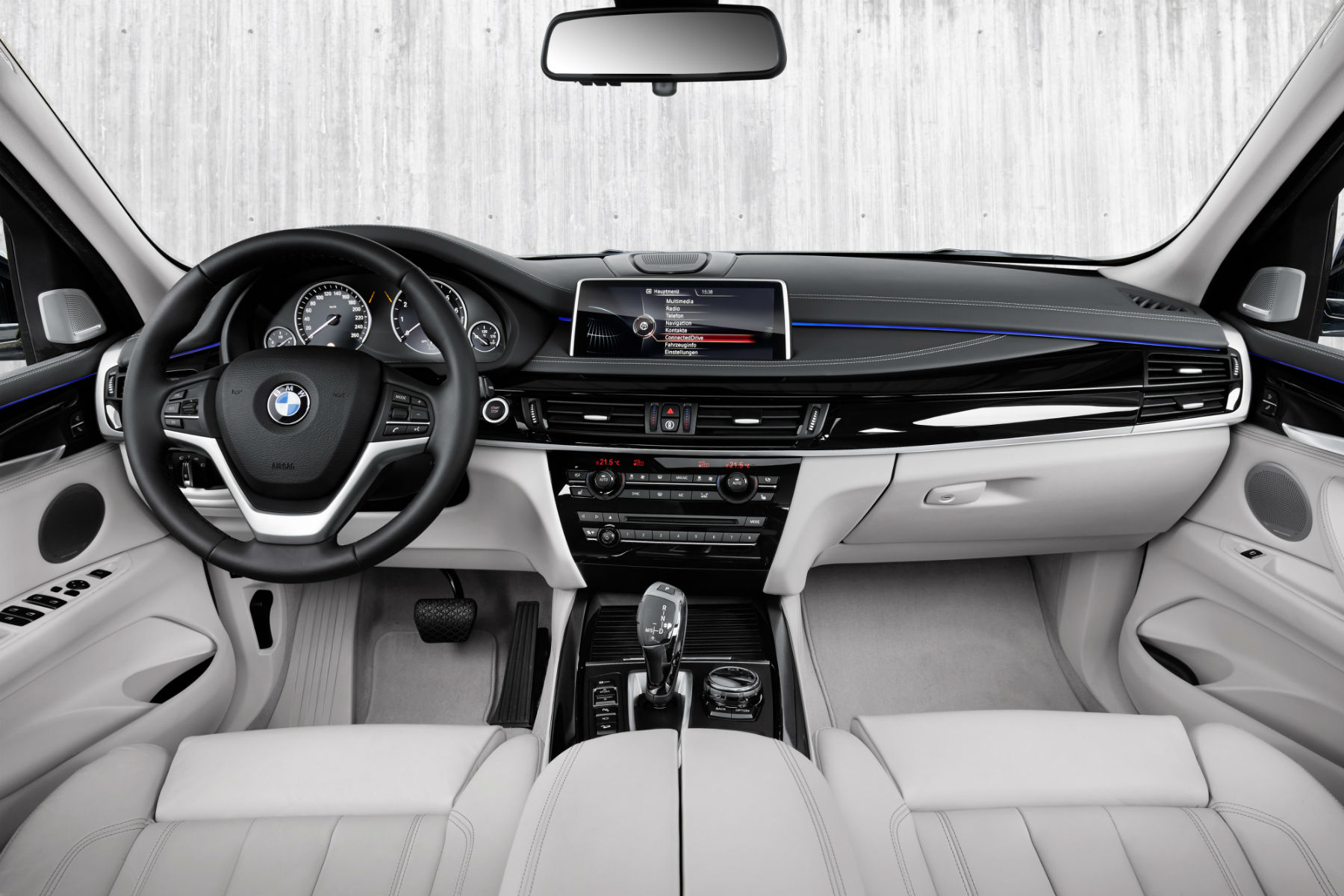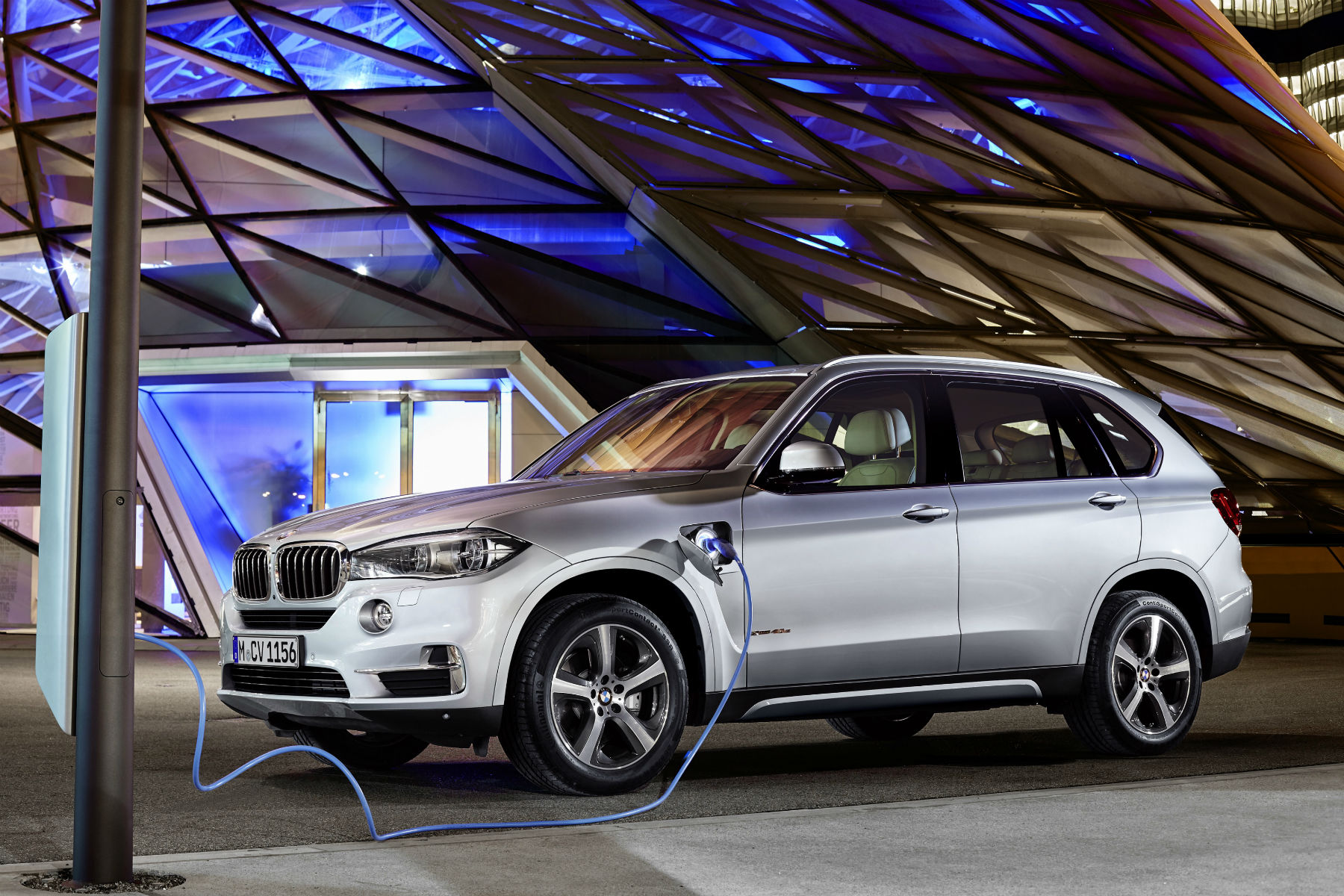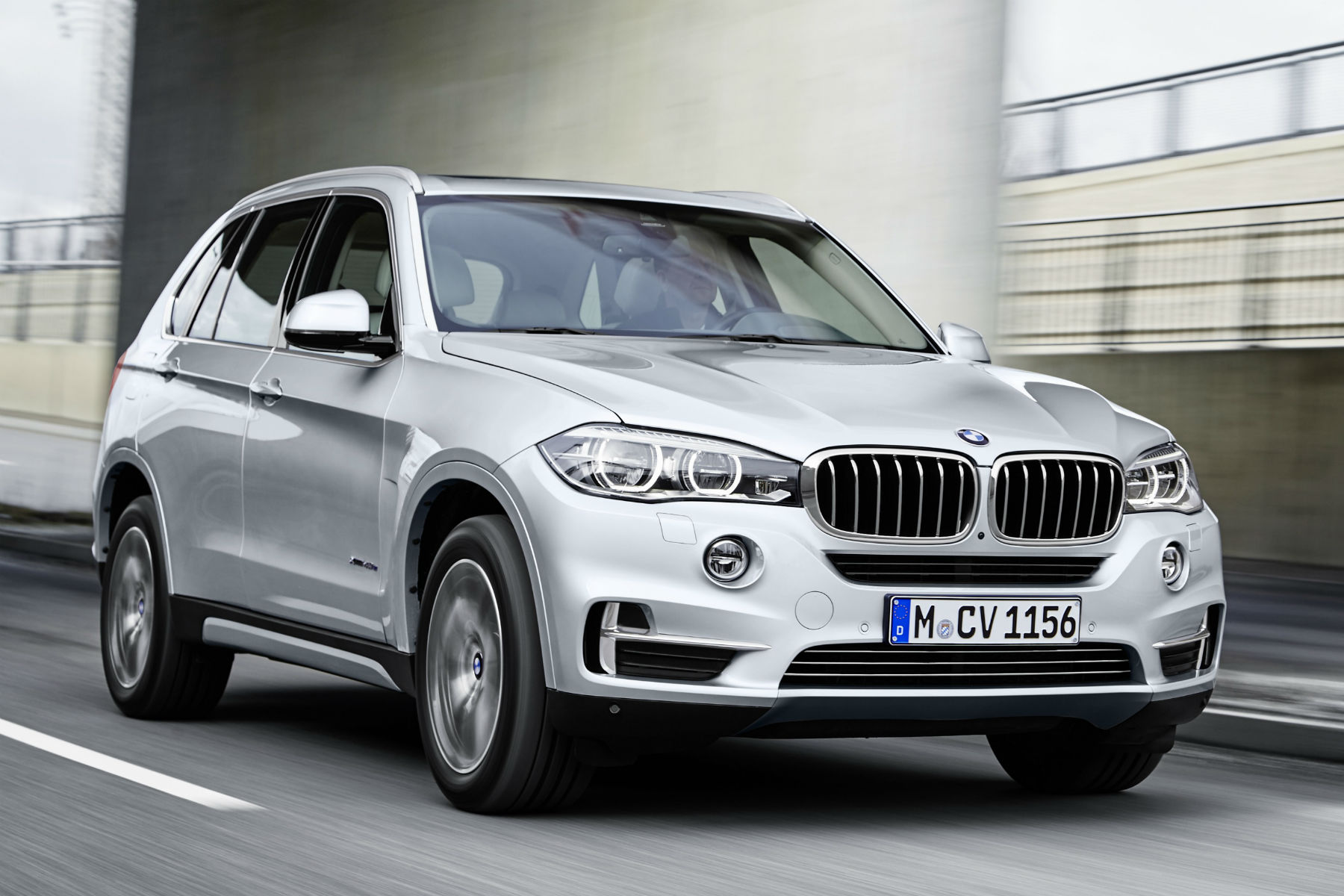BMW X5 xDrive40e: overview
Have you heard? Diesel is dirty. Bad news. Killing us all with its nasty NOx emissions and possibly set to be taxed through the roof in the UK by government ministers jumping on the anti-diesel bandwagon.
It’d be nice to think that manufacturers are all suddenly looking into alternatives for little ol’ UK. But, the truth is, there’s no need: they already exist. Places like North America and China have never gone for diesels quite like us. Which means manufacturers have been looking at eco-friendly alternatives for a number of years – and the UK is now starting to look like a serious market for these hybrid and electric vehicles.
One such vehicle is the BMW X5 xDrive40e. To translate that nomenclature: the BMW X5 is the brand’s luxury SUV, while the xDrive40e means it’s a PHEV (plug-in hybrid electric vehicle). It’s an X5 powered by a 2.0-litre four-cylinder petrol engine, combined with an electric motor. Unlike regular hybrid vehicles, though, which rely on the petrol engine to power the electric motor, this can also be charged from a socket on the wall.
The advantage of this is, for the short journeys that the majority of us do the majority of the time, it’ll run solely on electricity. So no tailpipe emissions at all – NOx, CO2 or otherwise.
Install a charger at home and the X5 PHEV’s electric-only range of around 19 miles should be good for your commute. Or so BMW suggests.
But, unlike electric cars such as the Nissan Leaf and BMW i3 (without the range extender… let’s not complicate matters), the X5 PHEV has got that petrol engine there which can be called on for travelling further afield.
So, when you get called to a business meeting at the other side of the country or need to lug the family away on your yearly skiing trip, the PHEV won’t leave you high and dry. It’s a good idea, in theory…
BMW X5 xDrive40e: on the road
In truth, you’re unlikely to use the X5 xDrive40e in electric-only mode very often. While it’s impressive around town, allowing you to silently dart in and out of traffic (as much as you can in a car the size of the X5), too much darting will soon use up the battery’s juice.
If you do want to drive in electric-only mode, you’ll notice little change when the petrol engine kicks in to automatically recharge the batteries. The change happens so smoothly that only the driver is likely to notice as the rev counter needle flickers – and the petrol engine is extremely refined.
We particularly like the intelligent energy management function which monitors the route you’ve programmed into the sat-nav. It can then work out how the hybrid system can be best operated for maximum efficiency – it might save electric-only mode for the part of your journey in stop/start urban traffic, for example, and charge the batteries while cruising along motorways.
With the petrol and electric motors working in unison, the X5 will hustle along at motorway speeds comfortably and smoothly. Don’t go expecting this to be an SUV version of the BMW i8, however – with a kerbweight comfortably exceeding two tonnes, there’s a lot of weight for the hybrid powertrain to get up to speed.
That extra weight combined with the 19-inch alloys of our test ride means the ride is on the firm side. Not uncomfortable, but it’s not the cosseting ride you may expect from a luxury SUV.
BMW X5 xDrive40e: on the inside
Inside, there’s little to differentiate the BMW X5 PHEV from the regular model. If you were looking for seats finished in biodegradable plant fibre and logos everywhere telling you how green you’re being, you’re going to be disappointed.
If, however, you’re simply looking at this from a financial point of view and want a luxurious and roomy SUV which won’t cost a fortune in fuel bills, the interior should more than live up to expectations.
There’s little special about it, but in a typically Germanic manner everything is well finished and feels distinctively premium. The X5’s iDrive system is easy to use with a bit of practice and there’s plenty of room for all the family.
Unless you’ve got more than three kids.
Normally, you can opt for an extra pair of seats in the X5’s boot, turning it into a genuine seven-seater. But with the batteries encroaching on boot space, the xDrive40e is only a five-seater. An obstacle only one manufacturer has managed to overcome…
BMW X5 xDrive40e: running costs
That manufacturer is Volvo. You get the impression that BMW hadn’t even accounted for Volvo pulling the frankly brilliant XC90 out of the bag when work started on the plug-in X5.
Not only does the plug-in hybrid Volvo XC90 T8 come with seven seats as standard, it also aces the BMW when it comes to running costs.
Ordinarily the X5’s CO2 emissions of 77g/km and combined fuel economy of 85.6mpg would be more than impressive. But the XC90 manages 49g/km and 134.5mpg.
Don’t read too much into the fuel economy figures – it’s more a case of how well the car is suited to the official tests, and the Volvo’s electric-only range of 26 gives it a helping hand here. The CO2 figures do make a difference, however.
While both are below the 100g/km barrier meaning free road tax for private users, the XC90 falls below 75g/km – putting it in the 9% benefit-in-kind company car tax band. The X5’s CO2 just misses out, meaning company car drivers would pay more for the X5, despite the retail price being lower.
And, as the XC90 is below 75g/km, it qualifies for the government’s plug-in car grant, which brings the initial purchase price for private buyers closer to that of the X5.
BMW X5 xDrive40e: verdict
The BMW X5 xDrive40e is yet more proof that being environmentally friendly doesn’t come at too much of a cost. Sure, you lose a bit of boot space, and don’t seriously expect to be going far on electric power alone. But you still get the luxurious driving experience that makes the BMW X5 such a tempting proposition.
It’s also technically rather brilliant. BMW’s engineers have made the whole set up work in such a slick manner that you can barely tell you’re driving something a bit unusual. It doesn’t shout about its hybrid powertrain, but that will suit some.
The downsides? Well, it’s no good if you want seven seats. It’s not exciting to drive in the same way as a Porsche Cayenne S E-Hybrid. And there’s that unexpected competition from Scandinavia which, despite a higher purchase price, is more convincing when it comes economy figures (not to mention feeling a tad more special).
Specification: BMW X5 xDrive40e
Engines: 2.0-litre 4-cylinder petrol combined with electric motor
Gearbox: Eight-speed auto
Prices from: £51,845
Power: 313hp
Torque: 332lb ft
0-62mph: 6.8 seconds
Top speed: 130mph
Fuel economy: 85.6mpg
CO2 emissions: 77g/km
